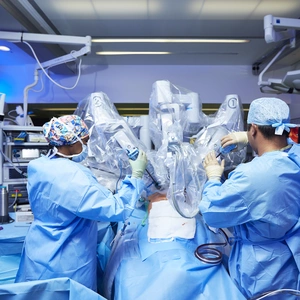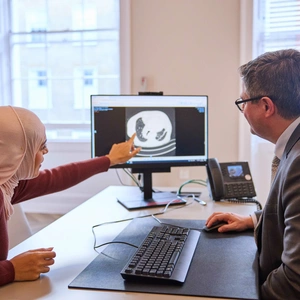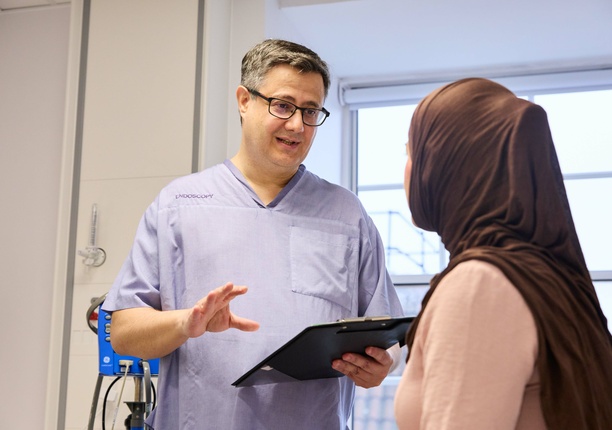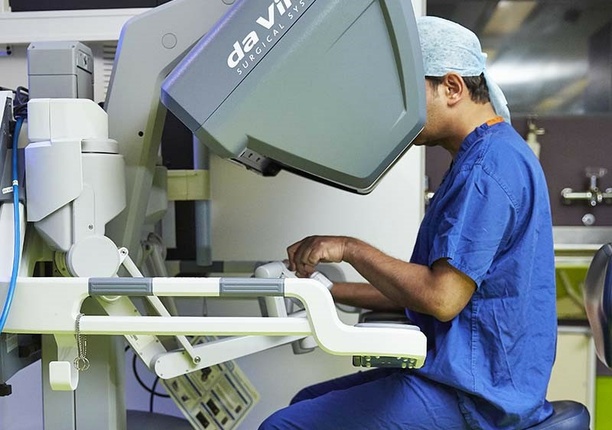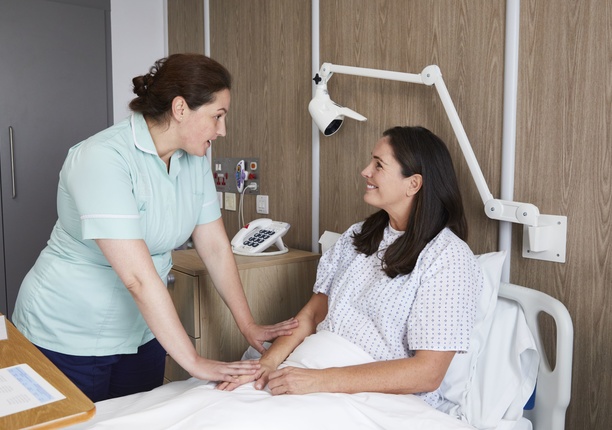Robotic lung surgery
The London Clinic was the first private hospital in the UK to introduce robotic surgery. In our Lung Centre, we use the da Vinci surgical robot to treat lung cancer and other conditions with greater accuracy and shorter recovery times compared to open surgery.
Robotic lung surgery FAQs
All surgical procedures come with risks, which your surgeon will explain to you. With robotic lung surgery, the risks include:
- Blood clots
- Infection
- Bleeding
- Abnormal heart rhythms
- Leaking air from your lungs
- Pain
However, robotic-assisted surgery is generally considered less risky than open surgery.
Thanks to the precision of the da Vinci robotic technology, minimally invasive surgery offers several advantages over conventional open surgery, including:
- Reduced pain
- Smaller incisions
- Minimal scarring
- Shorter stay in hospital
- Less blood loss
- Lower risk of infections
- Fewer complications
- Faster recovery time
The duration of robotic lung surgery depends on the type of technique used, which varies based on the condition being treated. However, most robotic lung surgery procedures take between one and three hours.
Video-assisted thoracic surgery (VATS) is a minimally invasive alternative to lung surgery. Some preliminary research indicates that robotic lung surgery offers similar long-term outcomes but with lower complication rates compared to VATS.
Step 1. Preparing for robotic lung surgery
Before your surgery, you will be given instructions to follow ahead of your surgery date. These will include:
- Fasting – you will be asked to stop eating and drinking (except water) for a certain amount of time prior to your surgery.
- Stopping certain medications – your surgical team will review the medications you currently take and advise you on any that you should stop taking prior to your surgery.
- Quitting smoking – smoking reduces blood flow, which can slow your recovery. Smoking can also contribute to other post-surgical complications and cause future health issues. As a result, it is important to quit smoking well in advance of your surgery.
- Preparing for a short stay in hospital – you will normally need to stay in hospital for a few days following robotic lung surgery, so make sure you pack a bag with anything you might need until you go home.
Step 2. During robotic lung surgery
Before your surgery begins, you will be placed under a general anaesthetic. This means you’ll be asleep during the procedure and will not feel any discomfort. A breathing tube will be inserted into your airway to allow each lung to be separately inflated during surgery.
Your surgeon will make between one and five small incisions between your ribs and place the instruments and the camera attached to the robot into the incisions. Using a nearby computer, your surgeon will view a 360-degree image of the surgical area and direct the robot with their own hand movements to remove the damaged lung tissue.
Towards the end of the procedure, your surgeon will insert a chest tube through one of the incisions to drain any excess air or fluid from your lungs. This tube will remain in place for several days and will be removed by your care team as you recover.
Step 3. Recovery and aftercare
Once the procedure is complete, you will be monitored as you wake up from the anaesthetic. You will then be transferred to your room, where you will stay until you are well enough to be discharged from the hospital. Since this is minimally invasive surgery, this process should be quicker compared to open lung surgery.
While you are in the hospital, your care team will monitor your condition, ensuring you are recovering well and are not in too much pain after robotic lung surgery.
Once you return home, you will need to rest to allow your body to continue recovering effectively. You will regain your strength and energy within two to three weeks.

